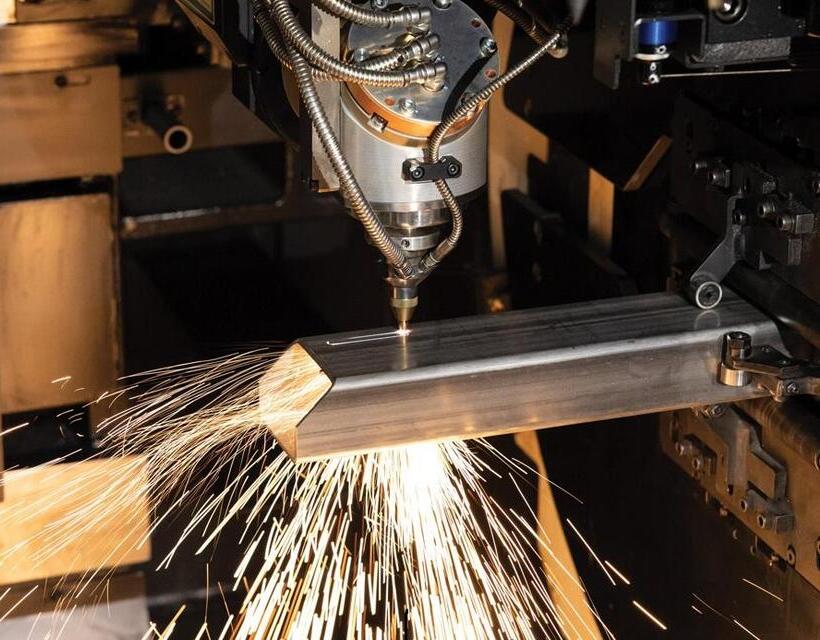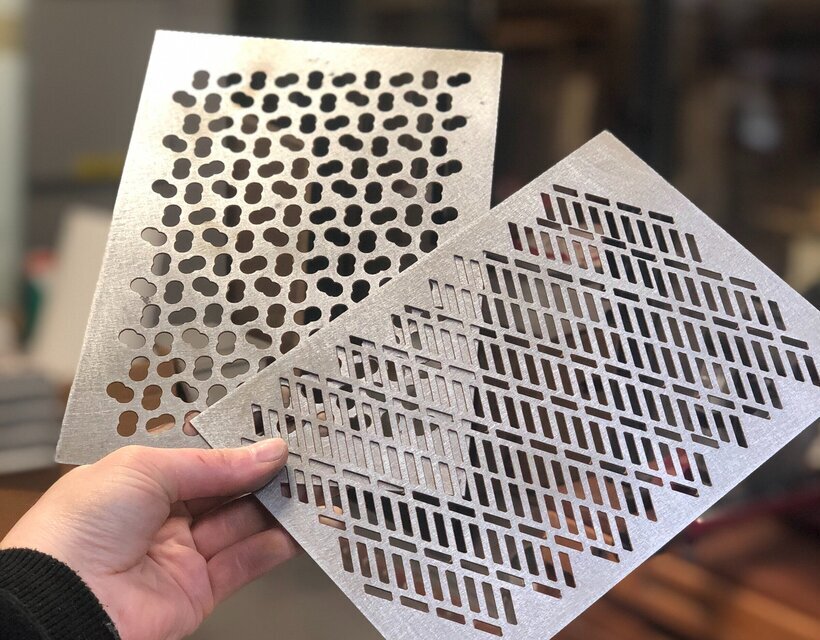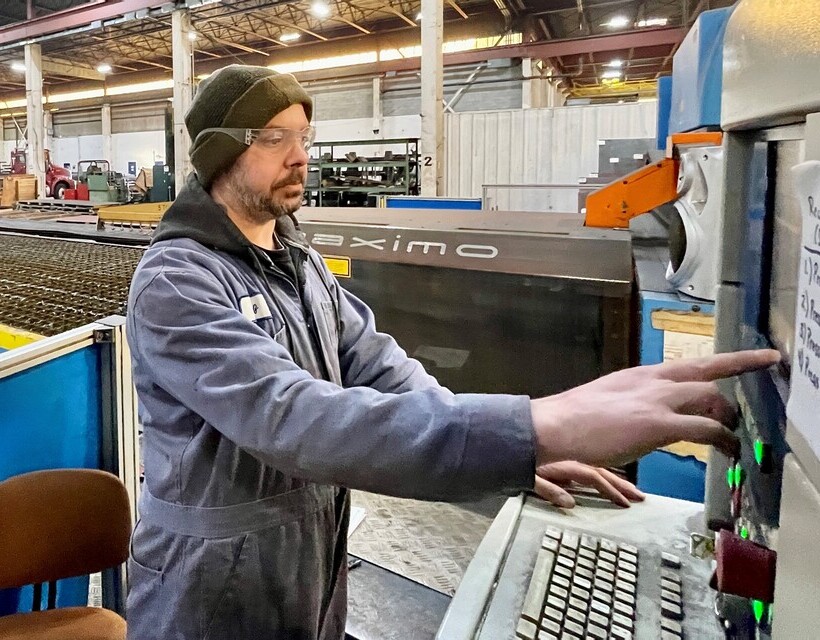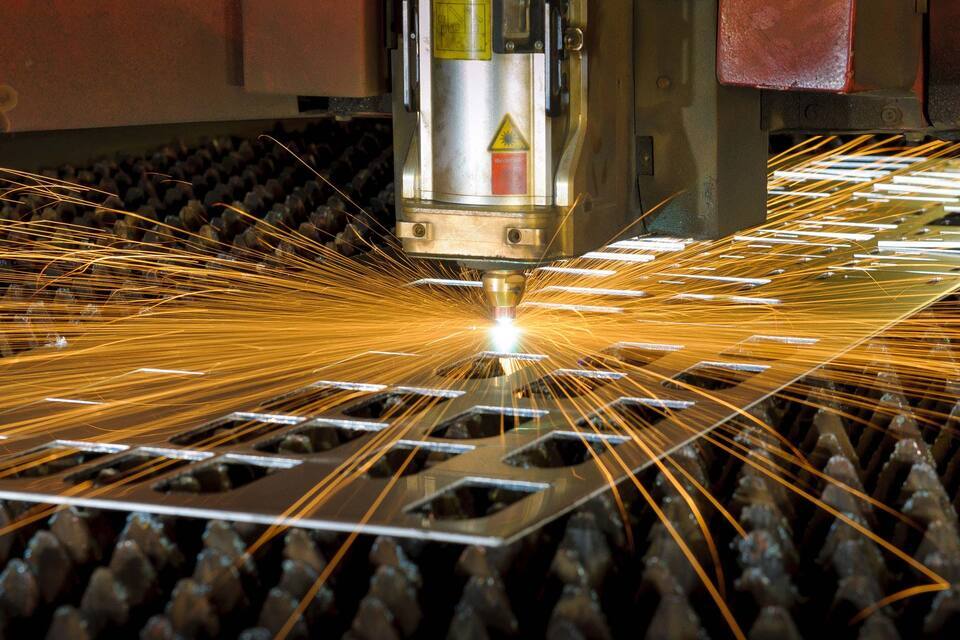Have you ever felt like part of a jigsaw puzzle with each piece fitting together perfectly? That's how laser cutting technology can feel to those who understand it.
Laser cutting is a powerful and precise tool that can be used for a variety of applications, from industrial production to artistic expression.
In this guide, we'll explore the different types of lasers used in cutting applications and their advantages and disadvantages. We'll also discuss the process, safety considerations, cost considerations, and how to choose the right laser for your application.
So open your mind and get ready – let's take a journey into the world of lasers!
Overview of Laser Cutting Technology

You can think of laser cutting as a powerful tool that slices through materials with incredible precision! Laser cutting is an advanced manufacturing process that uses focused beams of light to cut through different types of materials. The beam is generated from a high-powered laser source and is guided by mirrors or lenses and controlled by a computer numerical control (CNC) machine.
This efficient process produces accurate results in both hard and soft materials, making it ideal for a variety of applications. Laser cutting allows for intricate shapes to be cut with precise measurements, faster speeds than traditional methods, and minimal waste material. It also offers unparalleled accuracy when compared to other methods like water jetting or plasma cutting.
With the right settings, lasers can create smooth edges on any type of material without leaving marks or burrs. Whether you're looking for detailed engineering parts or intricate craftsman pieces, laser cutting will get the job done quickly and accurately!
Types of Lasers
When it comes to manufacturing, nothing screams efficiency like a laser. Laser cutting is a popular process used for many industrial and hobby applications, where the laser beam is used to cut or engrave material.
Lasers come in various shapes and sizes, and some are better suited for certain tasks than others. In this article, let's take a look at the different types of lasers commonly used in cutting applications.
CO2 lasers are the most commonly used type of laser for cutting materials such as wood, acrylics, plastics, and even metals. They produce an infrared beam that is highly concentrated and can be used to make precise cuts with high accuracy.
On the other hand, fiber lasers use a solid-state resonator that produces a visible light beam with high power levels, allowing them to cut through thicker materials faster than CO2 lasers.
YAG lasers also have similar properties as fiber lasers, but their main advantage lies in their capability to etch marks on metal surfaces such as stainless steel or titanium alloys with greater precision compared to other methods.
Finally, diode-pumped solid-state (DPSS) lasers offer more control over power levels and can be used for both marking and cutting applications with great accuracy at higher speeds compared to CO2 or YAG models.
Advantages and Disadvantages of Each Type of Laser
You wanna be sure you understand the advantages and disadvantages of each type of laser before you choose one for your cutting applications.
Each type of laser has its own unique advantages and disadvantages, from the power and accuracy of CO2 lasers to the speed and precision of DPSS models. It's important to consider your specific needs when evaluating which type is best for you.
CO2 lasers are great for engraving on a variety of materials, such as wood, glass, leather, and more. They're also ideal for cutting thicker materials like acrylics or woods with high density.
On the other hand, DPSS lasers provide extremely precise results when cutting thinner materials like paper or cloth with fine details. These types are also known to produce faster speeds than CO2 models while still maintaining accuracy in their cuts.
Ultimately, it's up to you to decide which is right for your project based on your budget and desired results!
Applications of Laser Cutting

Laser cutting is an incredibly versatile process, offering countless creative possibilities for your projects. By using a beam of laser light to cut through materials such as wood, fabric, paper, plastics, and metals with precision accuracy, it can help take your work from concept to reality.
Laser cutting is used in numerous applications across industries such as automotive repair and restoration, aerospace engineering, prototyping for production runs of components and parts in various shapes and sizes. It is also used for making jewelry designs that are intricately detailed and complex.
Additionally, laser cutting has been increasingly adopted by the graphic design industry due to its ability to create intricate patterns that could not be achieved otherwise. With the right type of laser cutter and settings tailored to the material being cut, you can get excellent results every time.
Laser Cutting Process
Once you've decided which type of laser cutting machine is right for your application, you'll need to set it up, program it, and run the process.
Setting up the machine involves mounting the necessary components and ensuring they are secure in place and properly calibrated.
Programming it requires inputting the instructions into the computer that will guide the beam during its cutting process.
Finally, running the machine means sending those instructions to cut along a designated path. Typically, this requires some adjustments to ensure accuracy.
Setting up the Machine

Getting the machine up and running needn't be a chore; it's actually quite straightforward. First, you'll need to make sure all of the components are connected properly. This includes connecting the laser cutting head, water pump, chiller unit, and electrical cables.
Once everything is connected securely, you'll be ready to get started. To ensure that your laser cutting process runs smoothly, check that any dust or debris has been removed from both the machine and its components. Make sure to also double-check that all settings on the control panel are correct before turning on the power source.
Taking these few simple steps will help guarantee success for your laser cutting projects!
Programming the Machine
Programming your laser cutting machine is essential for achieving the desired results from your project. Doing so correctly will help you make the most of the amazing capabilities these devices offer, ensuring that your work is completed to a professional standard. It can be daunting at first, but with some practice and patience, you can become an expert in programming your laser cutter.
The first step to programming a laser cutting machine is to input all of the data for each job into the system. This includes settings such as speed, power, focal length, and more. All of these must be adjusted according to material type and desired effect.
After this information has been entered correctly, it's time for the fun part: testing out different settings on scrap materials until you find just what works best! With trial and error comes confidence in knowing exactly how to get perfect results every time – something that could even set you apart from other makers in your field.
Running the Machine
Once the programming is complete, running your laser cutting machine requires skill and precision. Your experience, focus, and attention to detail will be put to the test as you work your way through the cutting process.
As you learn more about how these machines work, you may find yourself becoming more confident in your ability to produce high-quality results. The key is practice – with each job that you finish comes a new level of expertise.
The controls on a laser cutting machine are very precise and require careful adjustment before beginning a cut. In addition to controlling speed and power levels, there are various safety measures that must be taken into account during operation. These measures include wearing protective eyewear or gloves.
With proper preparation and caution, running your laser cutter can be both incredibly rewarding and satisfying.
Laser Cutting Safety Considerations
Before you start cutting with a laser, consider the safety measures that are necessary for a safe and successful operation. Visualize yourself wearing protective gear and handling the machine with care to ensure your well-being.
Make sure to wear eye protection when working around lasers as they can cause damage to eyes due to the intense light generated from them. Also, be aware of smoke and fumes released during laser cutting, so always ensure proper ventilation is in place when operating the machine.
It's also important to keep all flammable materials away from the work area while using a laser cutter. Lastly, make sure to read through instructions carefully before using any new equipment or materials together with your laser cutter for best results and safest use.
By taking these considerations into account, you'll increase your chances of having an enjoyable experience while operating a laser cutter safely and efficiently. Keep in mind that even if you follow all safety protocols, accidents can still happen; it's essential that you stay alert at all times while operating any type of machinery such as a laser cutter.
When it comes down to it, safety should come first: make sure you have appropriate knowledge of how these machines work before starting any project!
Laser Cutting Cost Considerations
Now that we've discussed the safety considerations involved in laser cutting, it's time to talk about cost. Cutting with lasers can be more expensive than other methods, but there are still ways to save money and make sure you get the most out of your investment.
Here are some key cost considerations for laser cutting:
- Cost of Machine:
- New vs Used - Purchasing a new machine can be more expensive than buying used, but could come with warranties and service plans that protect against unexpected repairs or issues down the line.
- Brand Name - More reputable brands may come with a higher price tag, but could also provide better performance and life expectancy.
- Cost of Materials - Different materials react differently when cut by lasers so it's important to consider what types of materials will need to be cut before committing to a particular type of laser. It's also important to factor in how much material will need to be cut on a regular basis as this can have an effect on overall costs.
- Maintenance Costs - Regular maintenance is essential for any machine and especially true for lasers which require specialized parts and services. It's important to consider these costs when budgeting for a laser cutter since they can add up over time if not properly managed.
Choosing the Right Laser for Your Application

Choosing the right laser for your specific needs can be tricky – but it doesn't have to be! When selecting a laser cutting machine, you must first consider what type of material you will be cutting. Different types of lasers are suited for different materials, so understanding what types of materials you will need to cut is an important factor in choosing the right laser.
Fiber lasers are best suited for thin metal and stainless steel, whereas CO2 lasers are better for thicker metals and plastics. It's also important to consider budget when making your decision as there is a wide range of prices available depending on the type and quality of laser chosen.
Another key factor to consider when selecting a laser cutter is its power output capability. Depending on how thick or dense the material is that needs to be cut, you may require higher power than others. If accuracy is important in your application, then look for options with higher beam quality such as fiber lasers, which have much more precise beams than traditional CO2 machines.
Finally, pay attention to automation capabilities – these can help increase production rates and efficiency while reducing labor costs. With all these factors considered, finding the perfect laser cutting machine becomes much easier!
Conclusion
It's easy to get overwhelmed by all the laser cutting options out there. But when you understand the different types of lasers, their advantages and disadvantages, and the applications they are suited for, it becomes easier to make an informed decision.
Think of it like a puzzle; each piece is essential in creating the perfect picture. In other words, choose the right laser for your application and you will be set up for success.
The same can be said for life in general—sometimes it takes hard work and dedication to find the right pieces that fit together best. But if you take your time to find what works best for you, just like with laser cutting technology, you will discover something beautiful at the end.
